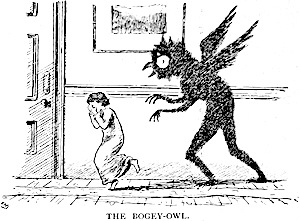Will the Real APT Please Stand Up?

The Advanced Persistent Threat (APT) is competing with Cyberwar for security word of the year. It would have been nice if we had given other important words like HTTPS or prepared statements their chance to catch enough collective attention to drive security fixes. Alas, we still deal with these fundamental security problems due to Advanced Persistent Ignorance.
It’s not wrong to seek out APT examples. It helps to have an idea about their nature, but we must be careful about seeing the APT boogeyman everywhere.
Threats have agency. They are persons (or natural events like earthquakes and tsunamis) that take action against your assets (like customer information or encryption keys). An XSS vuln in an email site isn’t a threat – the person trying to hijack an account with it is. With this in mind, the term APT helpfully self-describes two important properties of a threat:
- it’s persistent
- it’s advanced
Persistence is uncomplicated. The threat actor has a continuous focus on the target. This doesn’t mean around-the-clock port scanning just waiting for an interesting port to appear. It means active collection of data about the target as well as development of tools, techniques, and plans once a compromise is attained. Persistent implies patience in searching for “simple” vulns as much as enumerating resources vulnerable to more sophisticated exploits.
A random hacker joyriding the internet with sqlmap or metasploit be persistent, but the persistence is geared towards finding any instance of a vuln rather than finding one instance of a vuln in a specific target. It’s the difference between a creep stalking his ex versus a creep hanging out in a bar waiting for someone to get really drunk.
The advanced aspect of a threat leads to more confusion than its persistent aspect. An advanced threat may still exploit simple vulns like SQL injection. The advanced nature need not even be the nature of the exploit (like using sqlmap). What may be advanced is how they leverage the exploit. Remember, the threat actor most likely wants to do more than grab passwords from a database. With passwords in hand it’s possible to reach deeper into the target network, steal information, cause disruption, and establish more permanent access.
Stolen passwords are one of the easiest backdoors and the most difficult to detect. Several months ago RSA systems were hacked. Enough information was allegedly stolen that observers at the time imagined it would enable attackers to spoof or otherwise attack SecurID tokens and authentication schemes.
Now it seems those expectations have been met with not one, but two major defense contractors reporting breaches that apparently used SecurID as a vector.
I don’t want you to leave without a good understanding of what an insidious threat looks like. Let’s turn to the metaphor and allegory of television influenced by the Cold War.
Specifically, The Twilight Zone season 2, episode 28, “Will the Real Martian Please Stand Up” written by the show’s creator, Rod Serling.
Spoilers ahead. Watch the episode before reading further. It’ll be 25 minutes of entertainment you won’t regret.
The set-up of the episode is that a Sheriff and his deputy find possible evidence of a crashed UFO, along with very human-like footprints leading from the forested crash site into town.
The two men follow the tracks to a diner where a bus is parked out front. They enter the diner and ask if anyone’s seen someone suspicious. You know, like an alien. The bus driver explains the bus is delayed by the snowy weather and they had just recently stopped at this diner. The lawmen scan the room, “Know how many you had?”
“Six.”
In addition to the driver and the diner’s counterman, Haley, there are seven people in the diner. Two couples, a dandy in a fedora, an old man, and a woman. Ha! Someone’s a Martian in disguise!
What follows are questions, doubt, confusion, and a jukebox. With no clear evidence of who the Martian may be, the lawmen reluctantly give up and allow everyone to depart. The passengers reload the bus1. The sheriff and his deputy leave. The bus drives away.
But this is the Twilight Zone. It wouldn’t leave you with a such a simple parable of paranoia; there’s always a catch.
The man in the fedora and overcoat, Mr. Ross, returns to the diner. He laments that the bus didn’t make it across the bridge. (“Kerplunk. Right into the river.”)
Dismayed, he sits down at the counter, cradling a cup of coffee in his left hand. The next instant, with marvelous understatement, he pulls a pack of cigarettes from his overcoat and extracts a cigarette – using a third hand to retrieve some matches.
We Martians (he explains) are looking for a nice remote, pleasant spot to start colonizing Earth.
Oh, but we’re not finished. Haley nods at Mr. Ross’ story. You see, the inhabitants of Venus thought the same thing. In fact, they’ve already intercepted and blocked the Ross’ Martian friends in order to establish a colony of their own.
Haley smiles, pushing back his diner hat to reveal a third eye in his forehead.
That, my friends, is an advanced persistent threat!
-
The server rings up their bills, charging one of them $1.40 for 14 cups of coffee. I’m not sure which is more astonishing – drinking 14 cups or paying 10 cents for each one. ↩